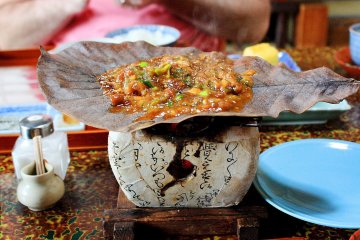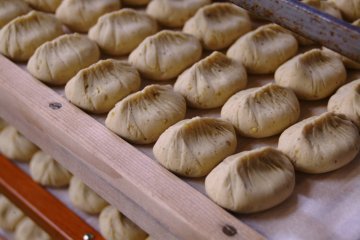Overview
Landlocked Gifu prefecture has historically relied on its mountains for its culinary traditions. The indigenous hoba magnolia leaf, with its fragrance and anti-bacterial properties works alongside the ever-popular miso to create both agrarian and home-cooked flavour combinations. Nationally recognised beef is also raised in Gifu while chestnuts feature in the prefecture's confectionery. Here is a simple guide to some of the regional cuisine of Gifu.
Hida beef
Probably Gifu's most famous modern traditional food, Hida beef is one of Japan's top beef brands. Intensely marbled meat with an almost snowflake look to it, this meat is slightly sweet in taste with a trademark melt-in-your-mouth texture. Hida beef is popularly eaten as shabu-shabu, sukiyaki and as a steak.

Hoba miso
One of Japan's most local of local dishes, the hoba miso of Gifu sees mountain vegetables grilled with miso paste on a top of a dried magnolia leaf. Bereft of other foods to eat during Gifu's harsh winters, hoba miso was originally fare for desperate mountain farmers. These days, the dish has been elevated to the point where it is now eaten with toppings like beef and sea urchin.

Keichan chicken
A kind of Gifu stir-fry dish, keichan chicken sees marinated chicken with cabbage fried in what is usually a base of miso sauce. Originating in the homes of Gifu, keichan chicken is also served fried in soy sauce or garlic. Whatever the base, the dish is a go-to one that never fails to satisfy.

Kurikinton
Served as part of the nation's traditional New Year's osechi meal, kurikinton is mix of chestnuts and sweet potatoes. However, in Gifu kurikinton became a sweet of peeled chestnuts candied in sugar. Not as sweet as it may first seem, kurikinton is also less sticky than the osechi version and as such, has become a very common and easy to eat treat.












